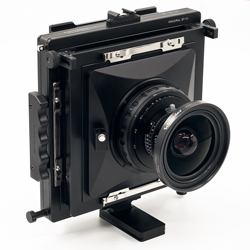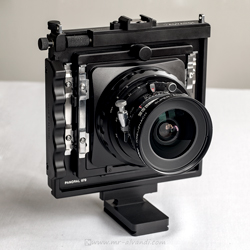Electronic flash
Electronic flash or reflector flood bulbs
I initially, for portrait photography, used a reflector flood bulbs. This bulbs, has a back mercury lamp with a power of 500 to 1000 watts. Basically, in the practice the use of the bulbs has several advantages. One of them is the continuity light. This entry causing, while lighting, investigated the direction and intensity of light and shadow. In portrait photography, most important issue is to create shadows on the face. The shadow can be hard or soft. So, with the help of reflector flood bulbs, should be established this case. Therefore, continuous light has two advantages, coherence and visibility.
But despite the benefits of reflector flood bulbs, there are some the disadvantages for it. The high heat generated by high–powered lamps, it will create problems for the subject. Also, despite the use of high-power light bulbs, but the light intensity is not enough to be able to work with the aperture closed. So always main problem was the depth of field. Another disadvantage of this light is the color temperature. It is approximately 3200 to 3400° K. Due to the use of daylight film, always color temperature correction filter will be required.
According to this cases, I felt the need for a electronic flash. But my main problem was available lack and high cost the instrument of that period. So I decided to designed this device.
I began to study the electronic reference books. From my brother Ali Reza Alvandi, who is an power electrical engineer, helped and I did the initial design. And began to experiment and test. Because the device operates at high voltage, the safety of electronic circuit, will form an important part of it.
An introduction to xenon lamp
Most important part of electronic flash, is the lamp. Xenon lamp, consists of a glass tube containing the inert gas xenon, and has three electrical connections. The two main connection is for the anode and cathode and a third wire for the trigger. This tube is made in different shapes. The most common is soleus (U-shaped), circular and linear shaped. In some models, the outer glass tube, covered by yellowish coating, because the color temperature of the light bulb, be similar to daylight. Usually, each tube under the terms of the manufacturer, has certain specifications. The most important are as follows:
— The minimum and maximum voltage anode – cathode required
— Optimal voltage
— Maximum energy released per discharge lamp, expressed in watt x second (WS) or joule
— Number of flashes with max energy input
— The minimum and maximum trigger voltage



How does it work electronic flash?
Working principles of all electronic flash, with xenon tubes are the same. Firstly, the main capacitor C1 is charged. Simultaneously, the trigger capacitor C2 will be charged. After excitation by S-switch flash or camera, trigger capacitor C2, being discharged inside the coil trigger T. Coil trigger, generates, high voltage pulse on tube. By pulses generated, xenon gas inside the tube will be ionized. By ionizing xenon gas, increases the electrical conductivity within lamp. Eventually, the energy stored in the capacitor C1, discharge inside the tube and the lamp is turned on.

Studio electronic flash
Above circuit, is regardless of the charging capacitor C1. This part can be operate by battery or AC 220V. Electronic flash studio, according to my design, is charged by 220V AC. In this flash, I used a circular shape xenon tube with a diameter of 90 mm. The xenon tube specifications is as follows:
— Outside diameter: 90 mm
— Voltage anode – cathode: min: 400V, max: 700V, designed: 650V
— Maximum energy released per discharge lamp: 800 watt x second
— Normal life in terms of the maximum voltage flash(No. of flashes): on average 10,000 times
—
Minimum trigger voltage: 10 kV

According to the specifications of the lamp, I've designed studio flash. In this studio flash, in addition to 750 W.S, by using dedicated key, can be used other powers 550, 400, 250, 80 W.S. This flash is also equipped with optical slave trigger. This part by excitation another flash light, the flash does activated. This collection, equipped with all kinds of umbrellas, soft box and the modeling lamp.


Technical Specification
Maximum power: 750 Joules (W.S)
Adjustable power (Joule): 750, 550, 400, 250, 80
Lamp Type: circular shape with a diameter of 90 mm
Power supply: 220V AC
Charging time: 3 seconds
Ability to install Umbrella and soft box: Yes
Special tripod: Yes
Trigger Voltage: 5V
Optical slave trigger: Yes
Optical slave trigger distance applied: 20 m
Modeling Lamp: Standard lamp holders with CFLs
Dimensions: diameter 15 cm, length 30 cm
Weight: 2000 gr
Macro flash
Macro flash is used in macro photography. This flash is made of different species. Circular type is the most common. But in my opinion, circular type, creating images that are free from shadows. Therefore, the the images will be flat and dimensionless. I've designed a different kind, which has three individual flash. They are independent of each other. Because the two of them is connected to a movable arm, by changing their location, we can control the direction of the shadow.
I made two different versions of these samples. I built one with a short arm and a power of 20 joules, and the other with a longer arm and 40 joules. Xenon tube contained in them, are linear shape. And main circuit, are embedded within a standard flash.

In front of the lamp, I installed light softeners. So the shadows created, is softer. By using aluminum rings, and dedicated converters, can be mounted to the front of any lens with 82 mm openings. by using the rotation and motion of the arm, lighting the scene is very easy.

Automatic Exposure
Because macro flash is very close to the subject, the light intensity, is very important. I solved this problem through a optical sensor. After pressing the shutter and discharge the flash, light is shined on the subject. Light reflected from the subject, collided with optical sensor, and it cuts off, the capacitor discharge circuit.

This system has a quench tube. Commands sent from the optical sensor, causing extra energy discharging in Quench tube. Actually Quench tube, is very similar xenon tube. With this difference, the discharge of energy in it, does not producing light. Thus occur consistently two actions, 1: The exposure of the subject is perfect. 2: Energy capacitor is not fully discharge, and for the next step, will be shorter recharge time.
Technical Specification
Power: 40 Joules
Arm length: 20 cm
Number of Lamps: 3 pcs
Conversion lens filters: 52, 67, 82 mm
Auto exposure: Yes
Manual exposure: Yes
ON / OFF key for each lamp: Yes
Light softener: Yes
Power supply: 2xAA batteries









